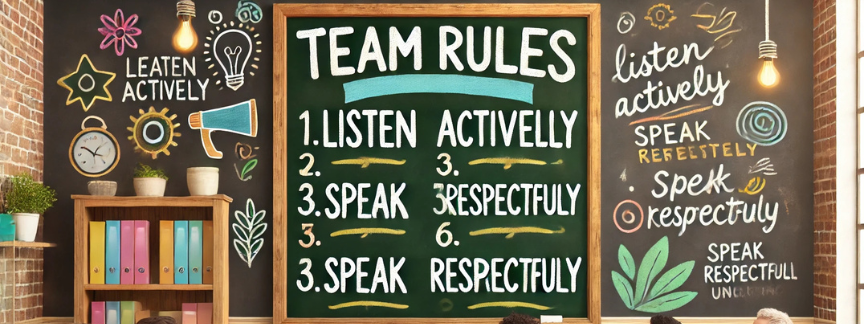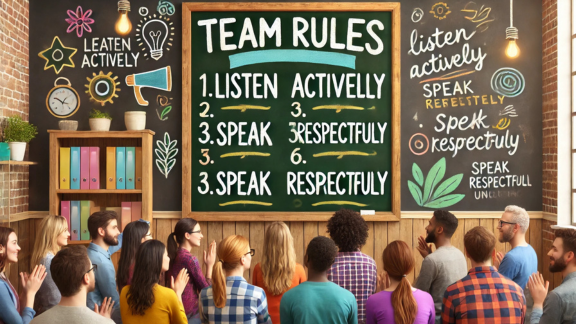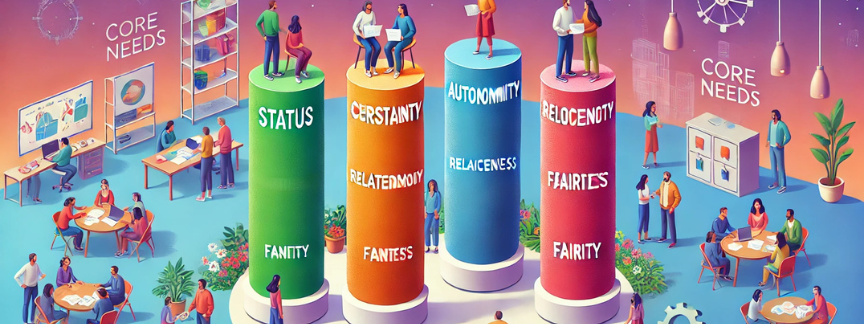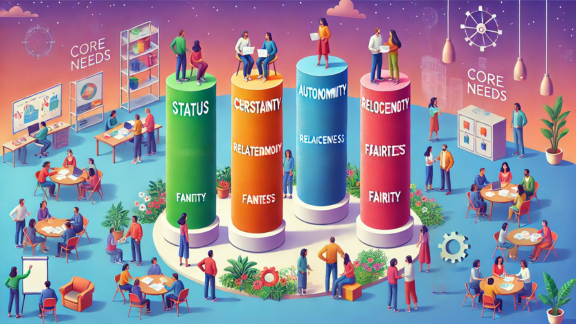
Chapter 3
Psychological Safety
“A team aligned behind a vision will move mountains. But when trust is lost, progress stalls.”
– Simon Sinek



Establish clear norms
Teams that explicitly define norms—such as listening without interruption—reduce uncertainty about acceptable behavior.






Foster peer-to-peer accountability
It’s not just leaders who shape psychological safety.
Teams that hold each other accountable build trust through mutual respect.
Teammates politely remind each other of meeting etiquette (e.g., “Let’s keep one conversation at a time”) instead of waiting for the boss to intervene.






Create shared rituals
Regular check-ins or retrospectives can become a safe space to share concerns.
Rituals create predictability, alleviating anxiety and encouraging open dialogue.






Leverage the SCARF model
David Rock’s framework—Status, Certainty, Autonomy, Relatedness, Fairness—highlights core social needs.
Addressing these reduces threats to team members’ sense of safety.






Value individual differences
Psychological safety grows when people see diversity as an asset.
Acknowledging varied perspectives prevents groupthink and enriches problem-solving.






Feel free to share with your colleagues
Give feedback, ask questions or request new resources


